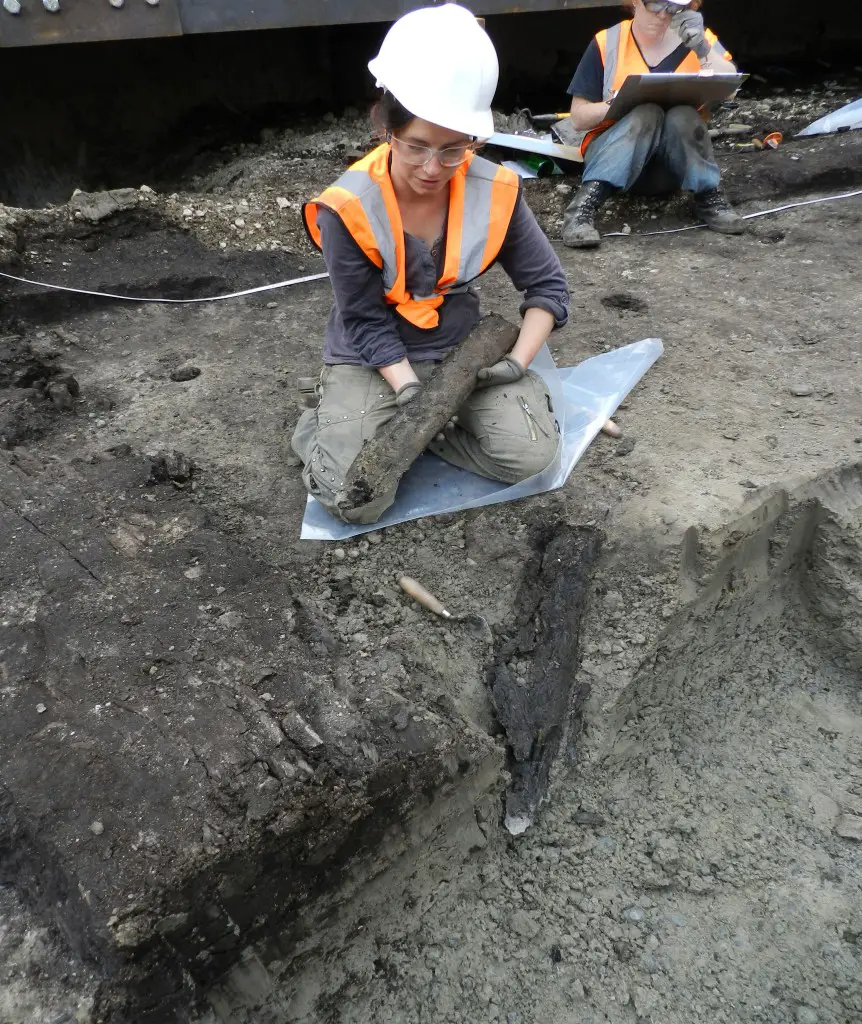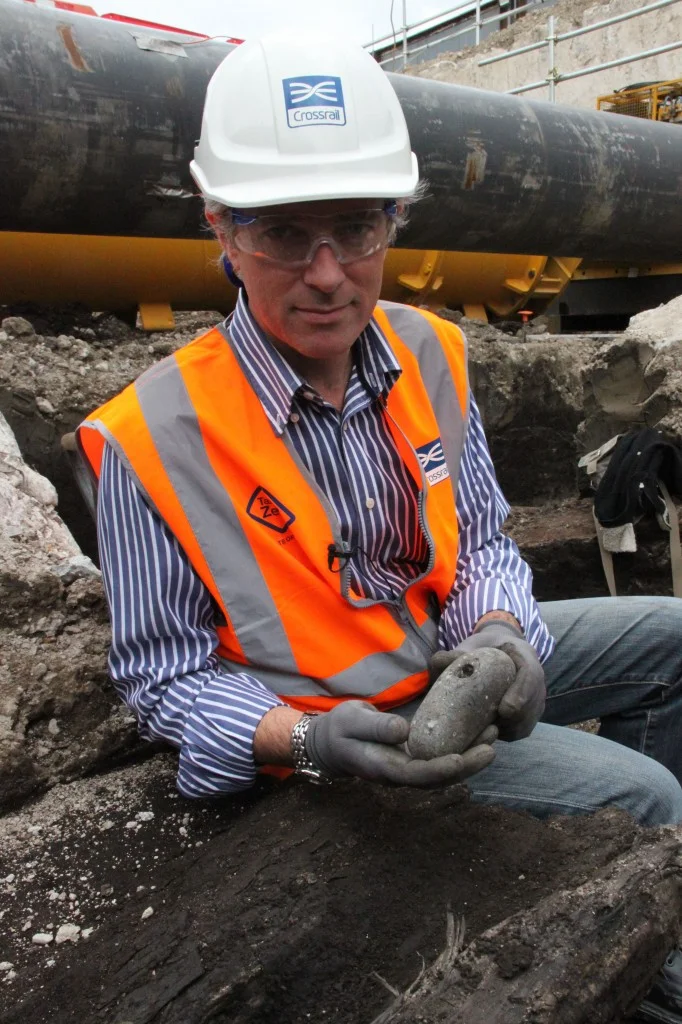Plumpstead Archaeology : Credit Crossrail
The UK’s largest archaeology programme has uncovered its first Bronze Age find as it continues a search for remains of a 3,500 year old Bronze Age transport pathway along the same route that London’s newest railway, Crossrail, will follow in east London.
The first Bronze Age artefacts for Crossrail come as Europe’s largest construction project opens a month long exhibition in London to showcase its archaeology finds to-date. Among the exhibits are medieval human bones found at Liverpool Street, the UK’s largest rare amber find and a piece of mammoth jaw bone. The items have been found during archaeology digs at Crossrail worksites across London.

The Bronze Age finds include two wooden stakes that have been cut by early London hunters with an axe, and which may have been used to build a timber pathway, and a hammer stone used as a tool. The discovery has been made during excavations at the Plumstead tunnel entrance in east London where two tunnel boring machines will begin constructing Crossrail’s Thames Tunnels early next year. Excavations of the site are continuing this week.
A large network of timber pathways were constructed in the Bronze Age across east London. Archaeologists think that these would have allowed easier access for hunters to the rich wildlife that lived on the lush wetlands some 3,500 years ago.

Crossrail’s Lead Archaeologist Jay Carver said: “This is a very significant find and the first Bronze Age find on the Crossrail project. We know from other sites nearby that this area was probably crisscrossed by a network of pathways. As excavation works for the Plumstead tunnel portal got underway our archaeologists uncovered several wooden stakes and at least two that appear to have cut marks from a metal axe.
“Although we haven’t identified an actual track way yet, the timbers are similar to those used to make the track ways and certainly show that people were in the area exploiting the woodland. This is a promising find as we continue our search for evidence of a Bronze Age transport route along where London’s newest railway will run.”
Crossrail will launch two tunnel boring machines from the Plumstead portal early next year and construct twin, 2.6 kilometre long tunnels under the River Thames. The tunnels will link Abbey Wood to central London and west to Heathrow and Maidenhead, reducing journey times from south east London by up to half.
The Bronze Age finds are currently being analysed by the Museum of London Archaeology and will not form part of the archaeology exhibition. The exhibition will run throughout October at the Crossrail Tottenham Court Road Visitor Information Centre at 16-18 St Giles High Street, WC2H 8LN
Contributing Source : Cross Rail
HeritageDaily : Archaeology News : Archaeology Press Releases




